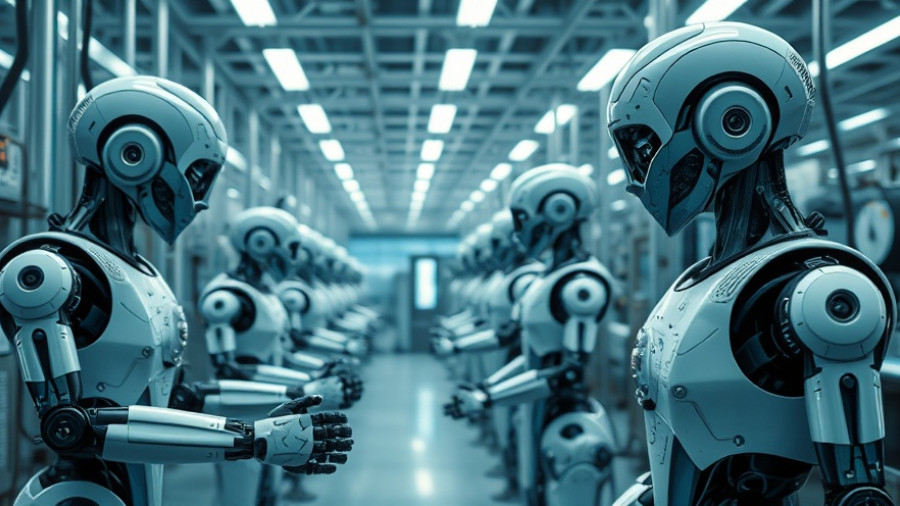
Amazon's Automated Future: A Two-Edged Sword
The recent revelations regarding Amazon’s aggressive automation plans have sent shockwaves through the workforce landscape. With leaked internal documents suggesting the company aims to replace over 600,000 U.S. jobs with robots by 2033, many are left questioning the future of employment in an increasingly automated world. As the second-largest employer in the United States, Amazon's transition to a world driven by automation has implications not just for its workforce but for the entire economy.
Understanding Amazon's Vision for Automation
According to reports, Amazon plans to automate a staggering 75% of its operations within the next decade. This isn't merely a lofty ambition but a strategic move to avoid hiring 160,000 new workers by 2027 and ultimately, over 600,000 by 2033. The leaked documents reveal a concrete blueprint that hints at a future where robotic efficiency, rather than human labor, drives productivity.
In light of Amazon's history of investing heavily in robotics and automation technologies, this shift shouldn’t come as a surprise. The company’s Shreveport warehouse is already functioning as a model for these changes, where more than a thousand robots handle the majority of packaging tasks. This has already reduced employment at the facility by 25%, with expectations to reach 50% as more robots integrate into the system.
The Ripple Effect of Job Losses
One of the most alarming aspects of Amazon’s plans is the potential ripple effect on the labor market. According to Daron Acemoglu, an MIT professor, if Amazon successfully automates its operations, it may set a dangerous precedent for other companies. Not only does this move threaten to make Amazon a 'net job destroyer', but it also provides a roadmap for competitors across various industries seeking to reduce labor costs through automation.
As automation becomes the norm, roles traditionally filled by human workers, particularly in warehousing, logistics, and even customer service, could become more scarce. This poses a significant challenge: Where will these displaced workers go? Will they receive the training they need to transition into new roles in an increasingly technical landscape?
Addressing the Skills Gap
The question of how to reskill and upskill the workforce for future jobs is critical. Amazon has suggested that future roles will require skills to maintain and operate robots, with the implication being that many existing jobs may require knowledge of robotics. While this presents opportunities for higher-paying technical roles, it simultaneously creates a skills gap that could leave a significant part of the workforce behind.
According to insights from industry experts, many current jobs, especially those involving repetitive tasks, will be at risk. Positions in warehousing, entry-level logistics, and some customer service roles are likely to see significant displacement. This stark reality underscores the necessity for ongoing education and training that prepares workers for the evolving job market.
What the Future Holds
As we peer into the future, it becomes evident that automation will continue to advance across industries. Experts suggest that other companies will inevitably follow Amazon's lead, further broadening the implications of job automation. Already, other major players like Walmart and UPS are observing these changes closely, potentially adapting similar strategies in their operations.
While automation can drive cost efficiency and productivity, it also necessitates a proactive approach in addressing workforce transitions. Ensuring that workers are equipped for the emerging job landscape is not just the responsibility of companies like Amazon, but also the government and educational institutions.
Preparing for Change
In light of these challenges, it’s crucial for workers to focus on developing skills that are less likely to be automated. This might involve emphasizing critical thinking, creativity, and advanced technical skills that align with the evolving demands of the labor market. Platforms for upskilling, such as online courses offered by organizations like Coursera and LinkedIn Learning, can help equip workers with the necessary competencies to thrive in an automated future.
The call to action for both workers and employers is clear: as automation reshapes our work environment, individuals must take charge of their professional lives and adapt to the changing job landscape.
 Add Row
Add Row  Add
Add 




Write A Comment